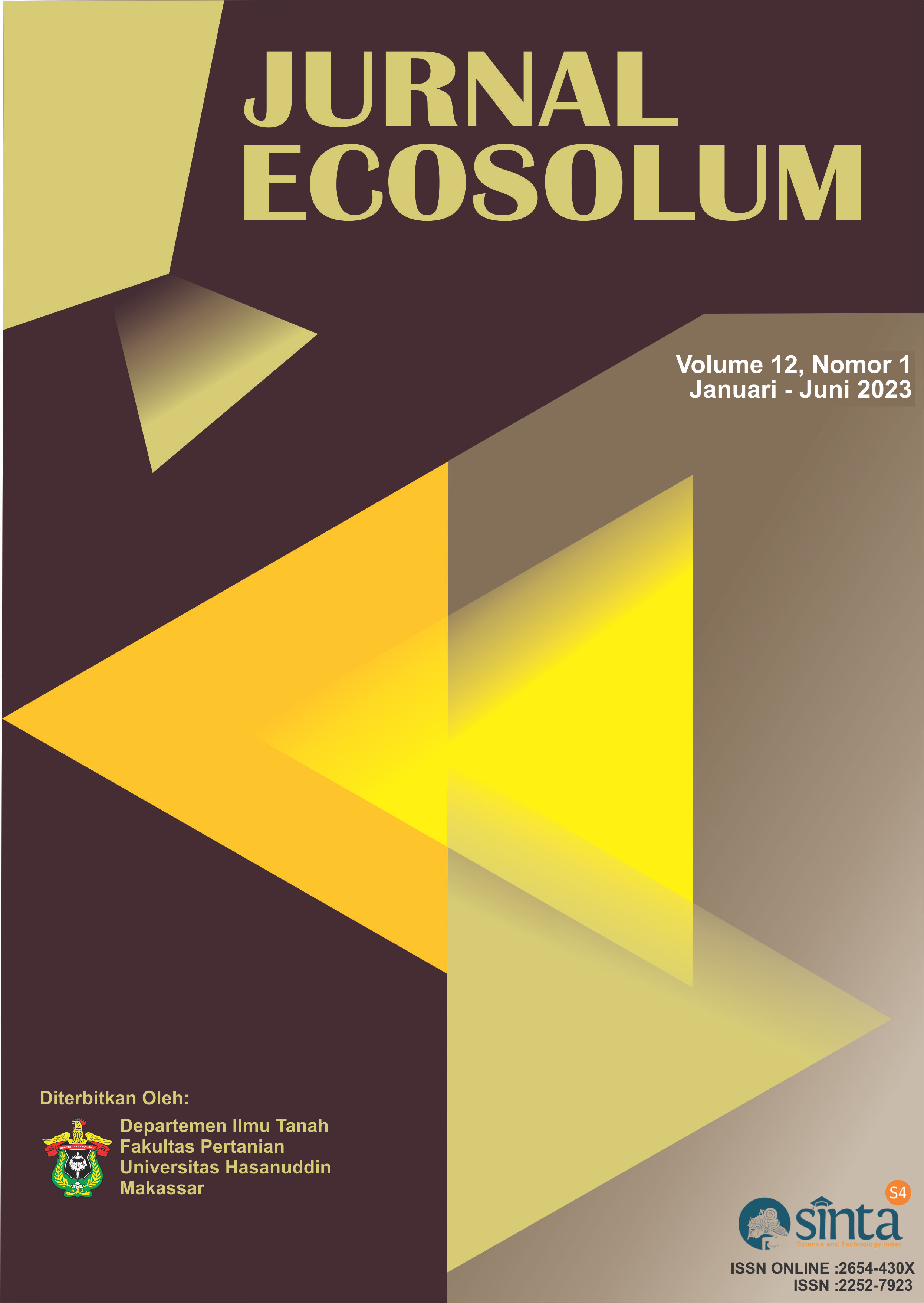Ketersediaan N dan Fe-larut pada Tanah Ultisol yang diaplikasikan Lumpur Kolam Ikan
The Availability of N and Soluble Fe on Ultisol Soil Due to Fish Pond Mud Application
DOI:
https://doi.org/10.20956/ecosolum.v12i1.25367Keywords:
Fe-larut, N-NH4 , N- NO3-, tanah marjinal, tanaman sawiAbstract
The use of fish pond mud in improving soil quality is generally still not widely used. This study used various doses of pond mud to determine the effect of pond mud doses on the availability of N and Fe-soluble in Ultisol soil planted with mustard greens. The research was conducted in the Greenhouse in April - May 2022 with a Completely Randomized Design (CRD), five doses of fish pond sludge namely at doses of 0; 0.5: 7.5: 10; and 12.5% applied to Ultisol soil. The results showed that applying fish pond sludge significantly affected soil pH, N-NO3-, N-NH4+ and Fe-soluble. Soil pH decreases due to a reaction between water and Fe compounds that bind OH- and release H+. Whereas N-NO3-, N-NH4+, and soluble-Fe significantly increased due to chemical reactions that produced soluble salts which reacted with water. As for the soil parameters, the effect of pond mud decreases soil pH at all doses of addition of mud and increases N-NO3-, N-NH4+, and soluble-Fe Ultisol, with the best doses of M3 (equivalent to 1 kg mud + 9 kg of soil). There is a relationship between the chemical properties of the soil and the fresh weight of the plants, as evidenced by the increase in the wet weight of the mustard plants.
Downloads
Published
How to Cite
Issue
Section
License

This work is licensed under a Creative Commons Attribution-NonCommercial 4.0 International License.












